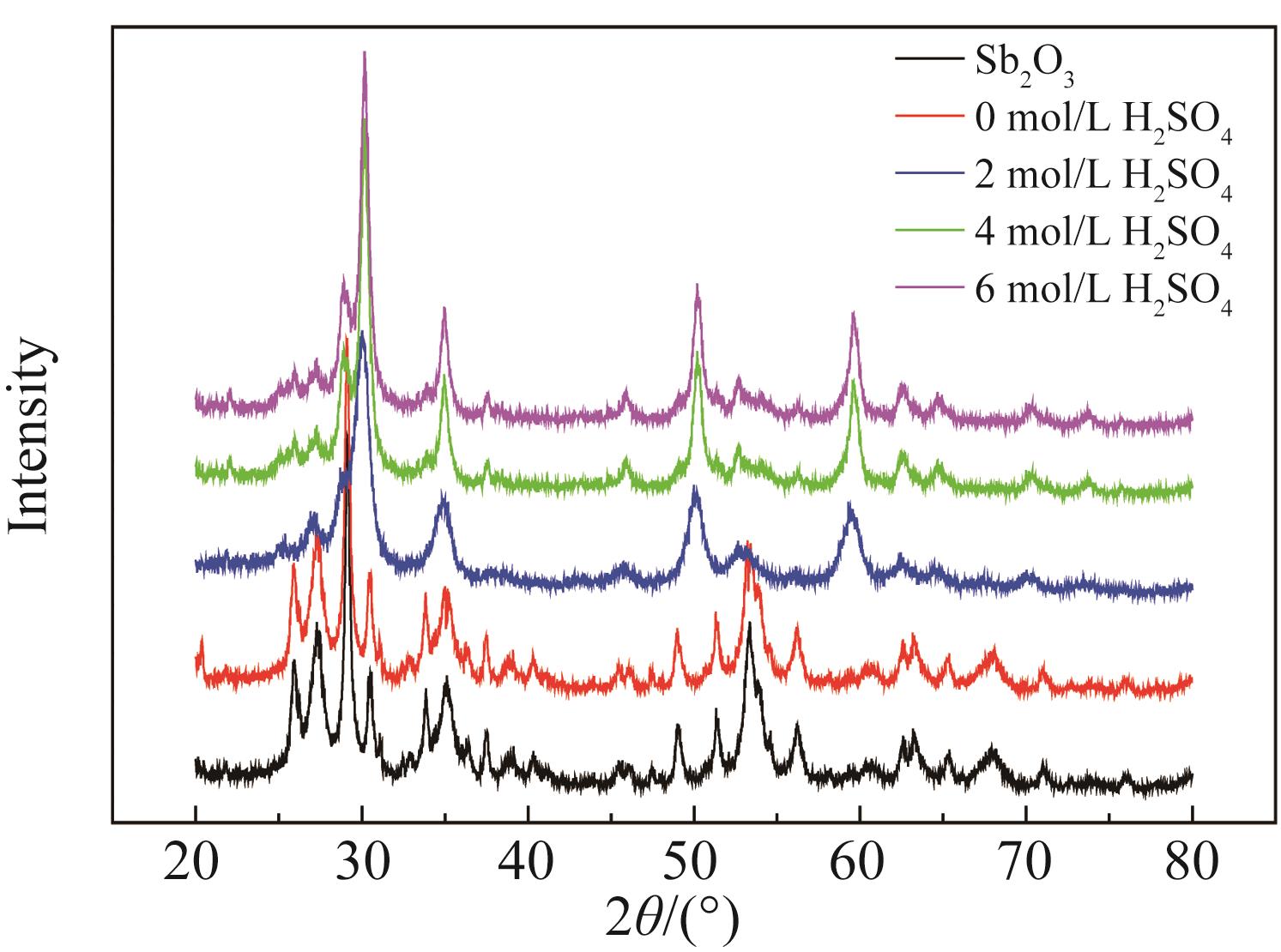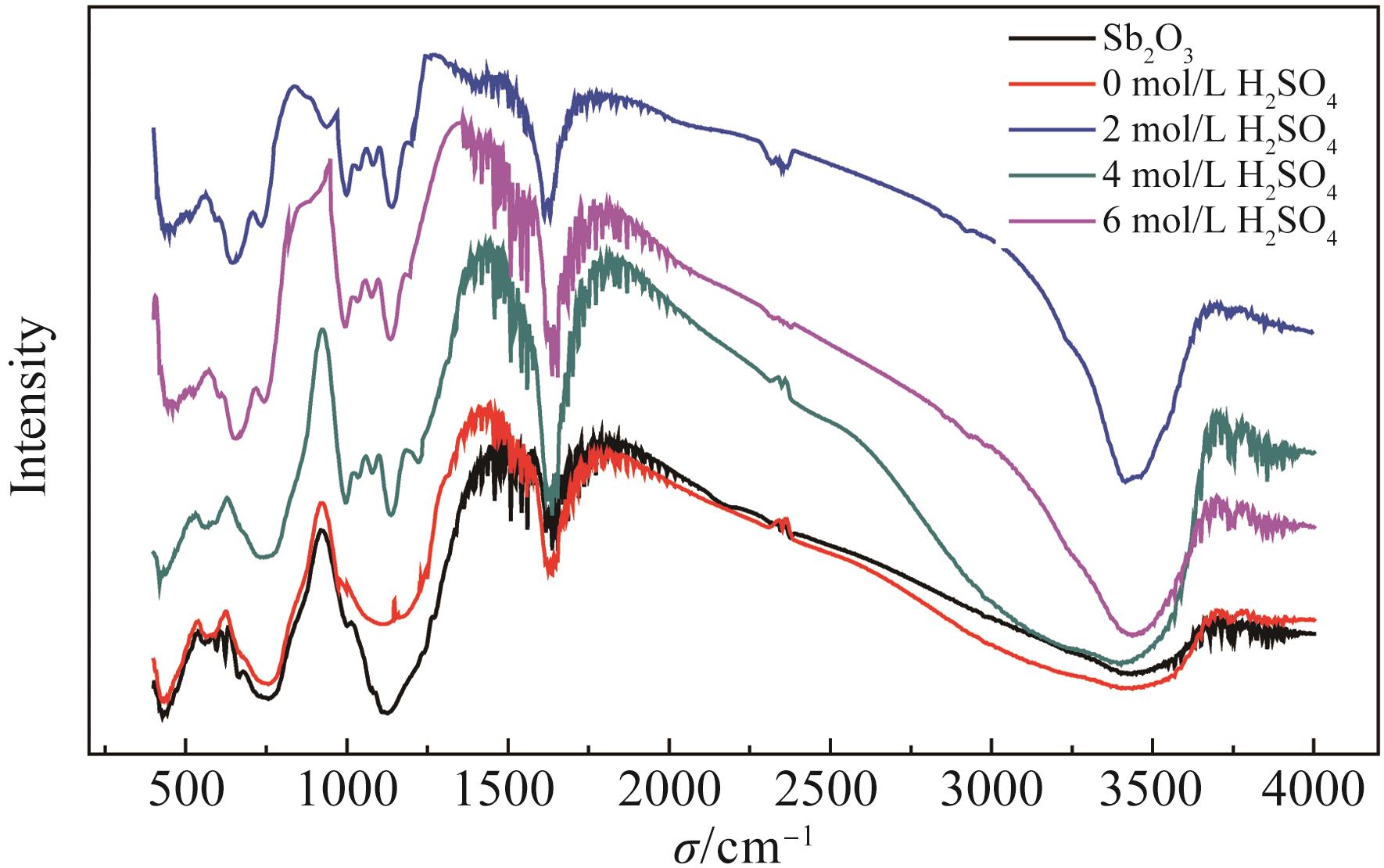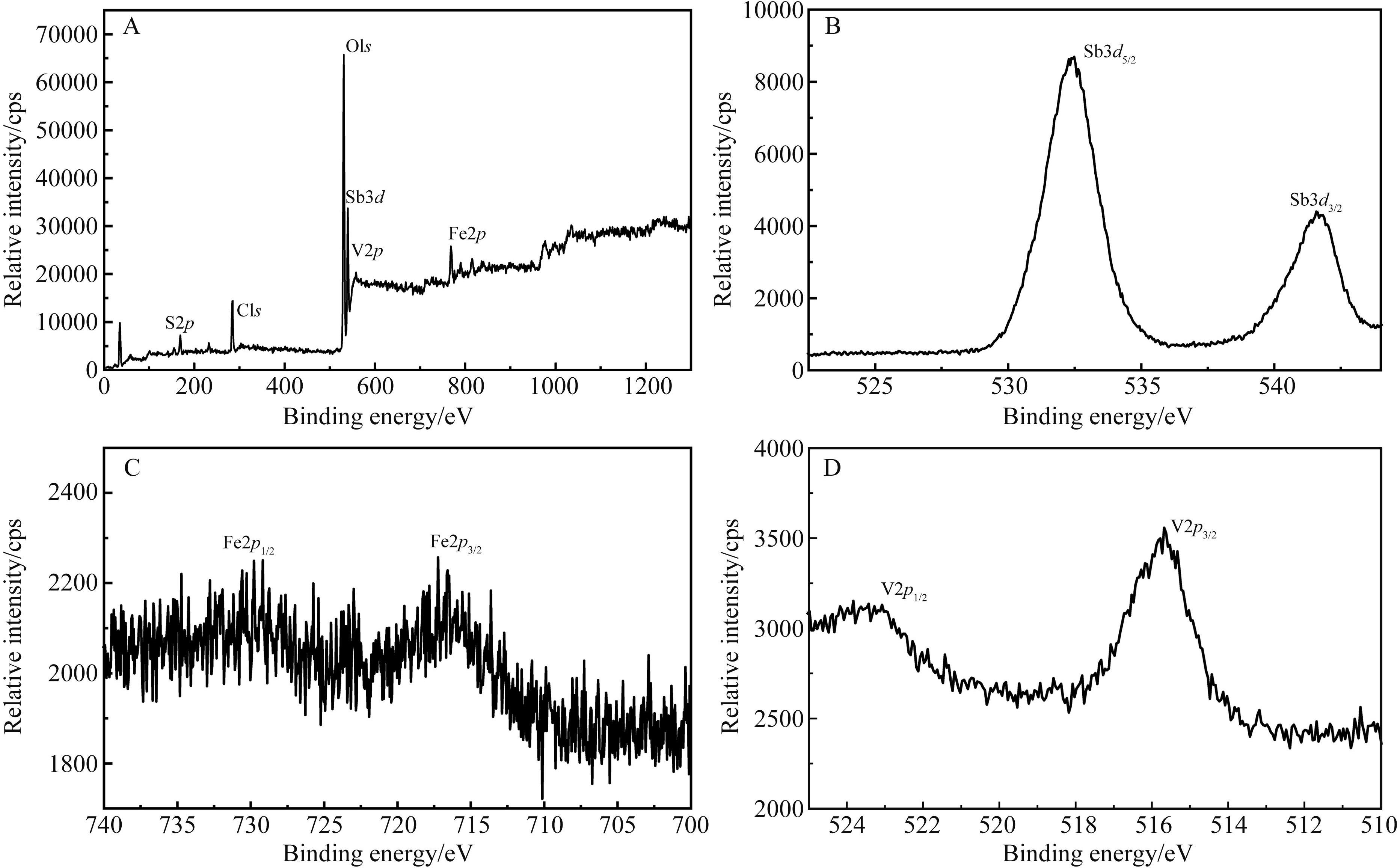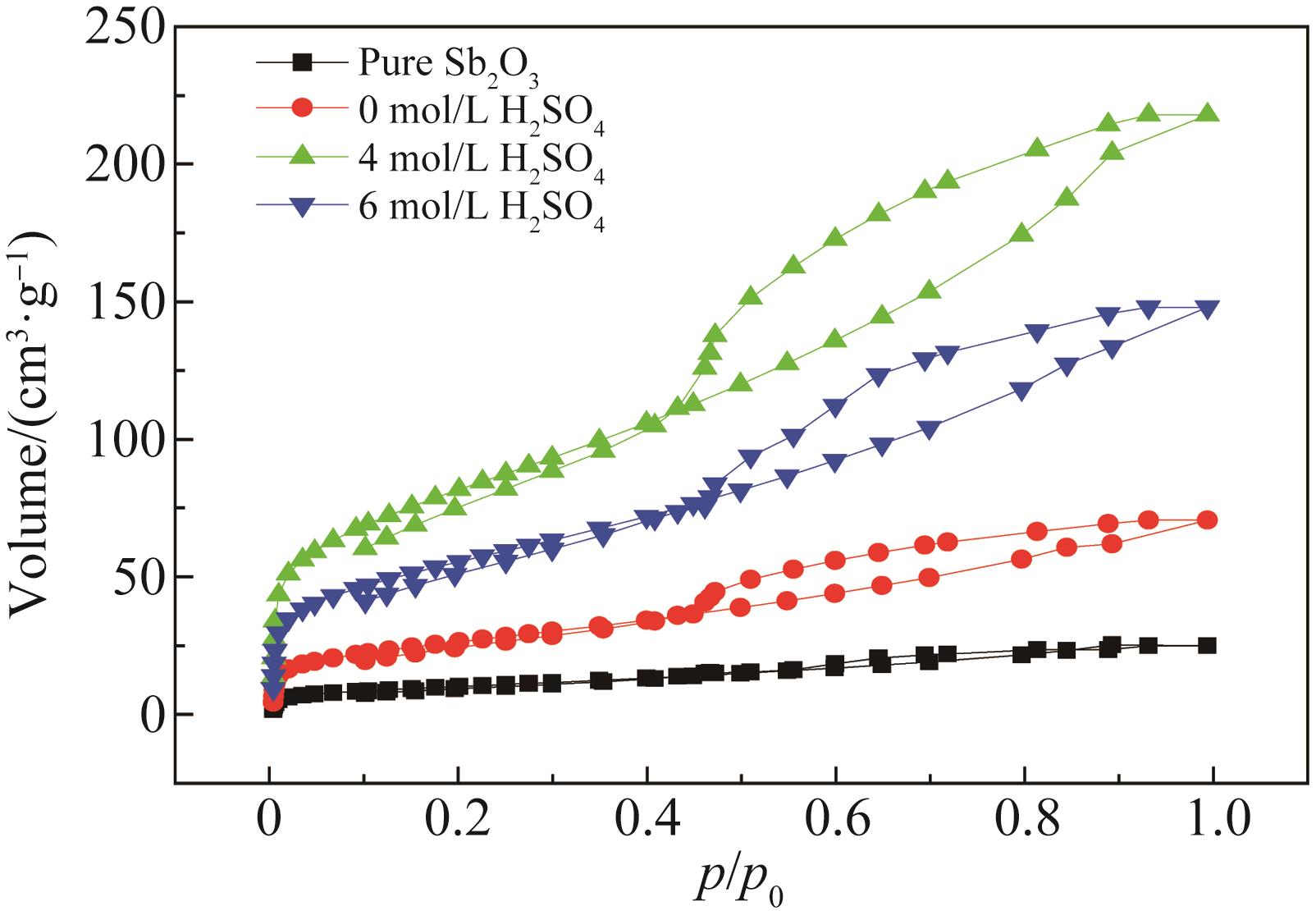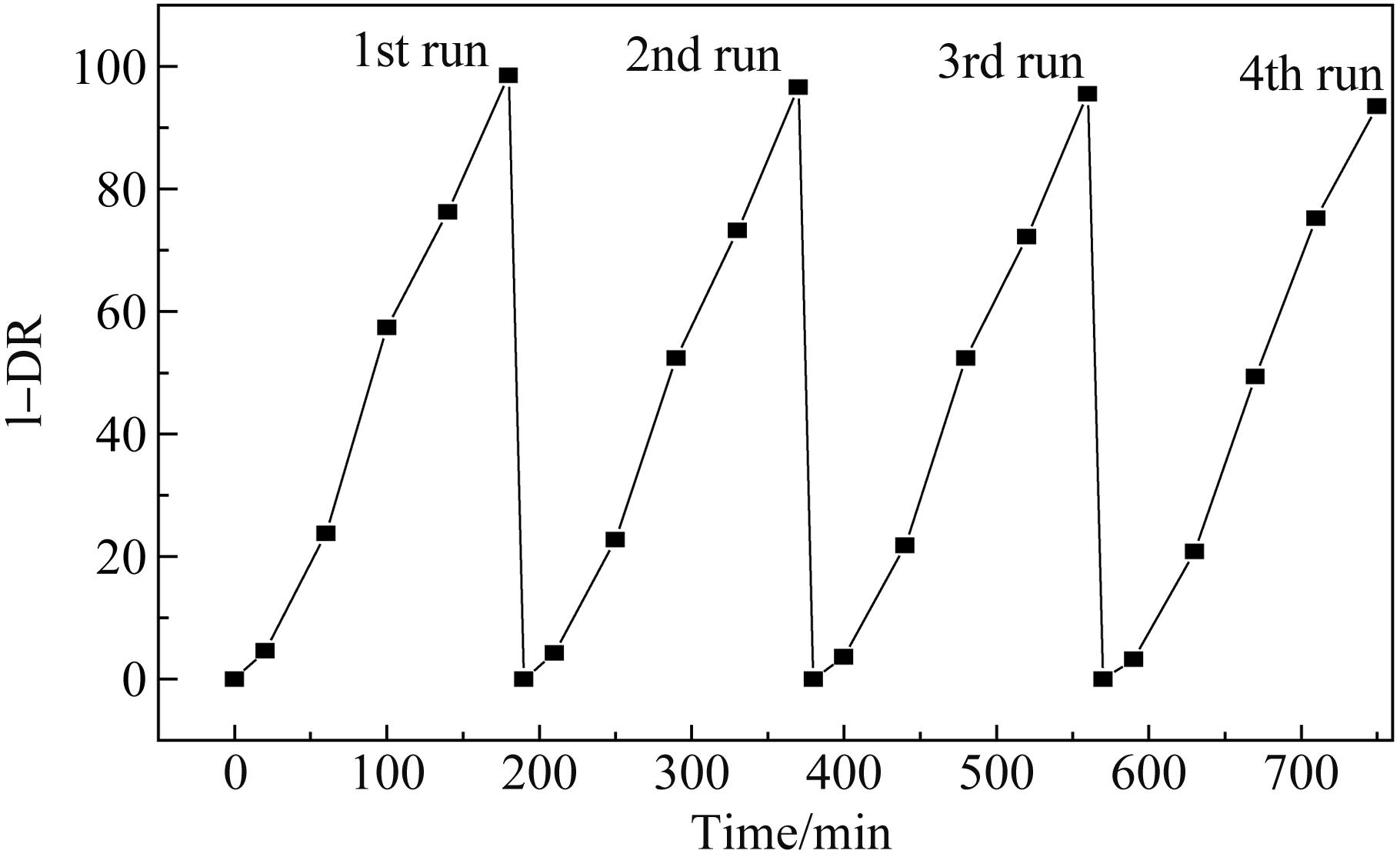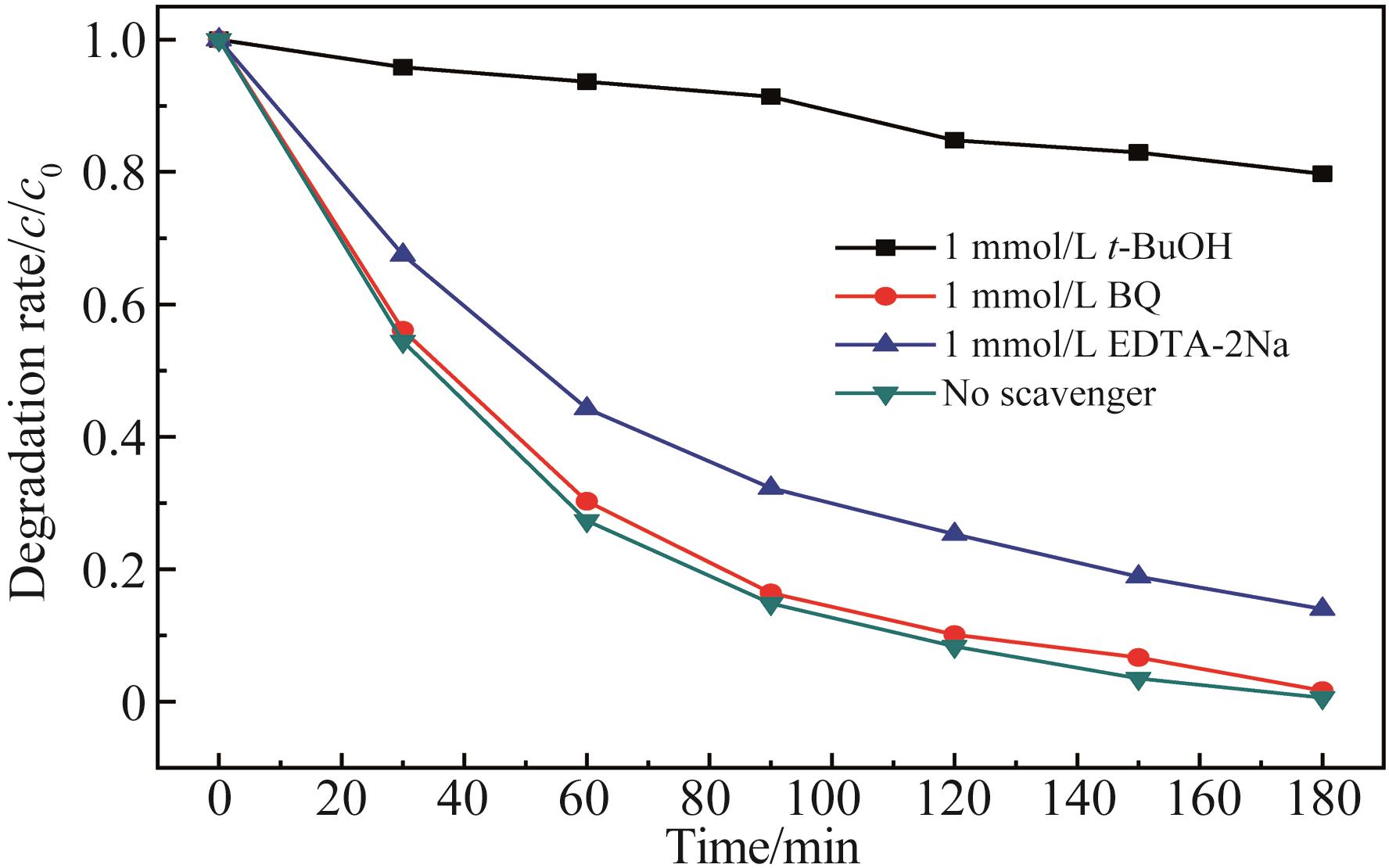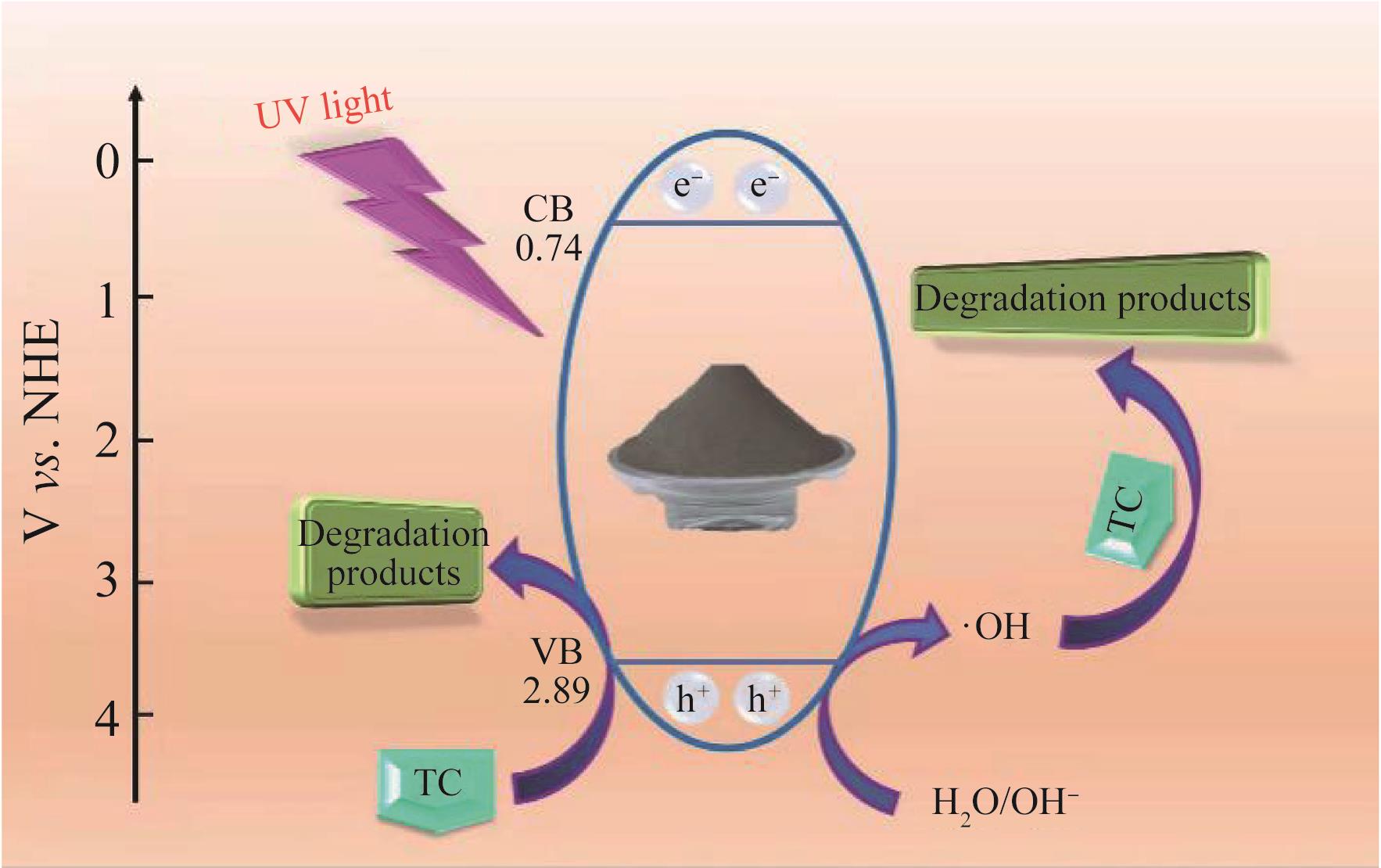
Chinese Journal of Applied Chemistry ›› 2022, Vol. 39 ›› Issue (10): 1572-1578.DOI: 10.19894/j.issn.1000-0518.220014
• Full Papers • Previous Articles Next Articles
Synthesis of Fe/V‑Sb2O3 Composites and UV‑light Catalytic Degradation of Pharmaceutical Wastewater
Yu-Feng ZHOU1, Chuan-Wei ZHOU2, Tong-Ze HU2, Zhan-Peng DUAN2, Hao-Tong WANG2, Shu-Yun SHI2( )
)
- 1.Liaoyuan Branch of Jilin Normal University,Liaoyuan 136200,China
2.College of Environmental Engineering,Jilin Normal University,Siping 136000,China
-
Received:2022-01-16Accepted:2022-04-28Published:2022-10-01Online:2022-10-05 -
Contact:Shu-Yun SHI -
About author:ltd920618@163.com
CLC Number:
Cite this article
Yu-Feng ZHOU, Chuan-Wei ZHOU, Tong-Ze HU, Zhan-Peng DUAN, Hao-Tong WANG, Shu-Yun SHI. Synthesis of Fe/V‑Sb2O3 Composites and UV‑light Catalytic Degradation of Pharmaceutical Wastewater[J]. Chinese Journal of Applied Chemistry, 2022, 39(10): 1572-1578.
share this article
| 1 | CHEN C C, WANG Q, LEI P X, et al. Photodegradation of dye pollutants catalyzed by porous K3PW12O40 under visible irradiation[J]. Environ Sci Technol, 2006, 40(12): 3965-3970. |
| 2 | KANG J, KUANG Q, XIE Z X, et al. Fabrication of the SnO2/α-Fe2O3 hierarchical hetero structure and its enhanced photocatalytic property[J]. J Phys Chem C, 2011, 115: 7874-7879. |
| 3 | LU H, WIKIE C A. Synergistic effect of carbon nanotubes and decabromodiphenyl oxide/Sb2O3 in improving the flame retardancy of polystyrene[J]. Polym Degrad Stab, 2010, 95: 564-571. |
| 4 | DENG Z T, TANG F Q, CHEN D, et al. A simple solution route to single-crystalline Sb2O3 nanowires with rectangular cross sections[J]. J Phys Chem B, 2006, 110: 18225-18230. |
| 5 | SONG L M, ZHANG S J, WEI Q W. Perfect, sectorial, branched Sb2O3 microstructures consisting of prolate microtubes: controllable seeded growth synthesis and optical properties[J]. Cryst Growth Des, 2012, 12: 764-770. |
| 6 | MOHAN S, PUSHPAVANAM S, VASUDEVAN S. Studies on the electrochemical preparation of Sb2O3[J]. Ind Eng Chem Res, 2007, 46: 7870-7874. |
| 7 | ZHANG T, HING P, RUIFANG Z. Improvements in Fe2O3 ceramic sensors for reducing gases by addition of Sb2O3[J]. J Mater Sci 2000, 35: 1419-1425. |
| 8 | CHEN Z, QU Y F. Dielectric properties and phase transitions of La2O3 and Sb2O3-doped barium strontium titanate ceramics[J]. Trans Nonferrous Met Soc China, 2012, 22: 2742-2748. |
| 9 | TIGAU T N, CIUPINA V, PRODAN G. The effect of substrate temperature on the optical properties of polycrystalline Sb2O3 thin films[J]. J Cryst Growth, 2005, 277: 529-553. |
| 10 | ZHOU X Z, LU H J, TANG X C, et al. Facile synthesis of Sb@Sb2O3/reduced graphene oxide composite with superior lithium-storage performance[J].J Cent South Univ, 2019, 26: 1493-1502. |
| 11 | PENG Y, CHEN J, JIANG L X, et al. Preparation of Sb2O3/Sb2S3/FeOOH composite photoanodes for enhanced photoelectrochemical water oxidation[J]. Trans Nonferrous Met Soc China, 2020, 30: 1625-1634. |
| 12 | RANI ROSALINEA D, SUGANTHIB A, VINODHKUMARC G. Enhanced sunlight-driven photocatalytic activity of SnO2-Sb2O3 composite towards emerging contaminant degradation in water[J]. J Alloys Compd, 2022, 897: 162935-162942. |
| 13 | XUEH, LIN X, CHEN Q, et al. S-doped Sb2O3 nanocrystal: an efficient visible-light catalyst for organic degradation[J]. Nanoscale Res Lett, 2018, 12: 114-123. |
| 14 | LAMBA R, UMAR A, MEHT S K, et al. Sb2O3-ZnO nanospindles: a potential material for photocatalytic and sensing applications[J]. Ceram Int, 2015, 41: 5429-5438. |
| 15 | WANG Z, SRIVASTAVA V, KHAR S I, et al. Fabrication of Sb2O3/PbO photocatalyst for the UV/PMS assisted degradation of carbamazepine from synthetic wastewater[J]. Chem Eng J, 2018, 354: 663-671. |
| 16 | JANNATUN Z, MOHAMMED R P, UFANA R. Photocatalytic degradation ofanti-inflammatory drug using POPD/Sb2O3 organic-inorganic nanohybrid under solar light[J]. J Mater Res Technol, 2019, 8(5): 4079-4093. |
| 17 | ALI M, LETICIA H F, MARTĺNEZ M T, et al. Novel SrZrO3-Sb2O3 heterostructure with enhanced photocatalytic activity: band engineering and charge transference mechanism[J]. J Photochem Photobiol A: Chem 2018, 356: 166-176. |
| 18 | LI Y, LIU J, HUANG X, et al. Hydrothermal synthesis of Bi2WO6 uniform hierarchical microspheres[J]. Cryst Growth Des, 2007, 7: 1350-1355. |
| 19 | ZHANG J, SHI F, LIN J, et al. Self-assembled 3D architectures of BiOBr as a visible light-driven photocatalyst[J]. Chem Mater, 2008, 20(9): 2937-2941. |
| 20 | XU Y R, ZHU X D, YAN H, et al. Hydrochloric acid-mediated synthesis of ZnFe2O4 small particle decorated one-dimensional perylene Diimide S-scheme heterojunction with excellent photocatalytic ability[J]. Chinese J Catal, 2022, 43: 1111-1122. |
| [1] | ZHAO Xing-Peng, WANG Ya-Qiao, GAO Sheng-Wang, ZHU Jian-Chao, WANG Guo-Ying, XIA Xun-Feng, WANG Hong-Liang, WANG Shu-Ping. Synthesis of BiOBr/CeO2 Composites for Photocatalytic Degradation of Sulfisoxazole [J]. Chinese Journal of Applied Chemistry, 2021, 38(4): 422-430. |
| [2] | LI Jiaqi, FU Dayou, YUAN Dong, XU Jing. Preparation and Characterization of ZnMgAl Hydrotalcite Supported BiOI [J]. Chinese Journal of Applied Chemistry, 2019, 36(1): 83-90. |
| [3] | DA Zulin, ZHAO Yong, SHI Weidong. Facile Preparation of Bi4V2O11/Reduced Graphene Oxide Heterojunction Photocatalysts for the Degradation of Antibiotic Pollutants [J]. Chinese Journal of Applied Chemistry, 2018, 35(8): 946-955. |
| [4] | PENG Bingxian, WANG Xiaoli, LIU Ruihan, ZHOU Aihong. Degradation of Ammonia-Nitrogen in Wastewater by TiO2/Pumice Photocatalyst under Solar Light [J]. Chinese Journal of Applied Chemistry, 2017, 34(8): 946-954. |
| [5] | FU Dawei, XIE Ruyi, ZHANG Linping, XU Hong, ZHONG Yi, SUI Xiaofeng, MAO Zhiping. Preparation of Hollow Spherical Bismuth Oxyiodide and Its Adsorption and Photocatalytic Degradation of Dyes [J]. Chinese Journal of Applied Chemistry, 2017, 34(5): 590-596. |
| [6] | LI Jie, LIU Yilin, DENG Youlin, WANG Wenxin, WANG Shuowen, LI Zengzeng, TANG Shi. Visible-Light-Induced Cyclization of Alkenes to Form Difluoroacetating Isoquinolinedione [J]. Chinese Journal of Applied Chemistry, 2016, 33(6): 677-684. |
| [7] | SHI Jianjian, LIU Xiaoming, TANG Xinghua, LI Shuailong. Synthesis and Properties of Nano Gold-Zinc Titanate Composite as a Novel Visible-light Plasmonic Photocatalysts for Solar Hydrogen Evolution [J]. Chinese Journal of Applied Chemistry, 2016, 33(5): 583-590. |
| [8] | ZOU Xiaomei, CHEN Yan, ZHU Xingwang, LIU Gaopeng, GUO Xinwei, LEI Qin, KE Xiaoxue, LI Shuaixing, HUA Yingjie, WANG Chongtai. Preparation of the Keggin Type Chromium Substituted Phosphotungstates/Titanium Dioxide Nano Film and Its Visible Photocatalytic Performance [J]. Chinese Journal of Applied Chemistry, 2016, 33(3): 320-329. |
| [9] | CHEN Feng, ZHENG Liuping, HUANG Yingying, YAN Guiyang, WANG Ying. Preparation and Visible Light Denitrification Performance of CeO2/TiO2 Photocatalyst [J]. Chinese Journal of Applied Chemistry, 2015, 32(7): 801-807. |
| [10] | LI Mengting, LIU Haicheng, ZENG Xing, XU Xiaonan, ZOU Xiaomei, HUA Yingjie*, WANG Chongtai*. Visible Light Catalysis of Keggin-type Cr-Substituted Heteropolyanion/D301R [J]. Chinese Journal of Applied Chemistry, 2014, 31(08): 965-970. |
| [11] | SUN Tingting1,2, LI Wenliang1, XIE Zhigang1*, JING Xiabin1. Preparation and Application of Heterogeneous Photocatalysts Based on New Cross-Linked Polymers [J]. Chinese Journal of Applied Chemistry, 2014, 31(05): 548-552. |
| [12] | WANG Juan2*, QI Xiaoting2, LI Ziying1*, HE Fulan2, ZHU Wenhua2, GUO Jian1. Synthesis, Structure, Electrochemical, Fluorescent Property and Photocatalytic Activity of Uranium(Ⅵ) Hybrid Supramolecules [J]. Chinese Journal of Applied Chemistry, 2014, 31(02): 193-199. |
| [13] | MIN Shi-Xiong*, WANG Fang, WEI Li-Qiang, WANG Yong-Sheng, AN Hong-Gang, WU Dong-Qing. Preparation and Photocatalytic Activity of Fe3+ Doped TiO2/Attapulgite Composite Photocatalyst [J]. Chinese Journal of Applied Chemistry, 2010, 27(06): 700-704. |
| [14] | ZHANG Li-Li1,2, LV Fu-Jian1, LIU Jian-Quan1, TANG Chao1, WANG Xin1*. Synthesis of Attapulgite-SnO2-TiO2 Nanocomposites and Their Photocatalytic Property [J]. Chinese Journal of Applied Chemistry, 2010, 27(01): 63-68. |
| [15] | Zhang Huqin, Chen Kaixun, Jing Zhengsheng. Surface Modification and Surface Structure of Pt/CdS Photocatalyst [J]. Chinese Journal of Applied Chemistry, 1997, 0(1): 98-100. |
| Viewed | ||||||||||||||||||||||||||||||||||||||||||||||||||
|
Full text 1081
|
|
|||||||||||||||||||||||||||||||||||||||||||||||||
|
Abstract 392
|
|
|||||||||||||||||||||||||||||||||||||||||||||||||
